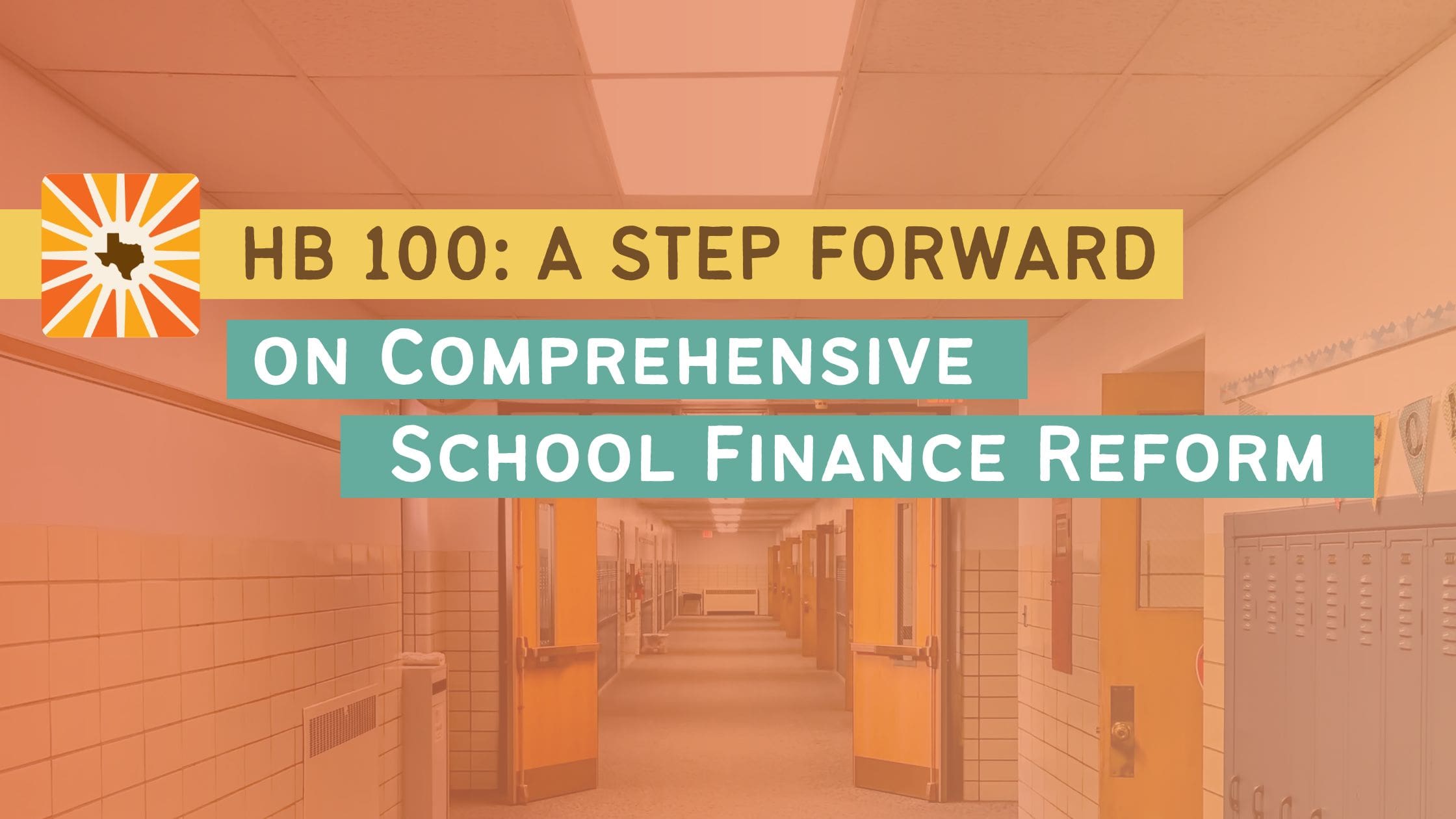The Texas House passed a comprehensive school finance bill that contains several good ideas but little actual funding. HB 100 moves the school finance system toward enrollment-based funding, makes future adjustments for inflation, and overhauls special education funding – all good things. However, when comparing the $4.5 billion price tag for HB 100 with the nearly $17 billion being set aside for property tax cuts, it is clear that legislative leadership has chosen wealthy landowners and businesses over educating the next generation of Texans.
Enrollment Based Funding
The school finance system uses a collection of weights and allotments to direct funding to students with additional financial needs. The formula starts with the regular program allotment where students are assigned the value of 1. Then if a student is, for example, enrolled in a bilingual education program the student would also be assigned an additional value of 0.10. So in this example, an emergent bilingual student is funded at a weight of 1.10 or 110% of the basic allotment.
Schools are funded based on the average daily attendance of the initial student count and any additional weights or allotments attached to students. Under HB 100, the initial student count, the regular program allotment, would continue to be based on attendance but many of the additional weights and allotments assigned to specific students would be based on enrollment.
Each year nearly 300,000 students are not funded in Texas since funding is based on attendance rather than enrollment. That doesn’t really change under HB 100 because the regular program allotment will continue to use attendance. Schools will see additional funding for students in special populations when those weights and allotments are based on enrollment, however, there are also more restrictions on how those funds can be spent. The regular program allotment provides the most flexibility to districts and is largely used for teacher compensation.
HB 100 moves the following weight/allotments to average enrollment: bilingual education; career and technical education; public education grant; early education allotment; gifted and talented; special education; the new allotment for advanced pathways and certain programs of study; and the dropout recovery and residential placement facility allotment. The state programs that support facilities for some districts would also be based on enrollment rather than attendance. Funding for low-income students (compensatory education) was switched to enrollment-based funding with HB 3 in 2019.
The newly created fine arts allotment and rural pathway excellence partnership allotment and outcomes bonus will be based on average daily attendance.
Adjusting for Inflation
HB 100 increases the basic allotment to $6,250 from $6,160 in 2024 and then to $6,300 in 2025. For a total increase of $140 for the biennium. Beginning in the 2025-26 school year the basic allotment will be adjusted for inflation using the 10-year average of the Texas Consumer Price Index for the second year of the biennium.
If the basic allotment was adjusted for inflation annually since it was set in 2019, it would be $7,671 by 2025. That is $1,371 more than the increase offered in HB 100.
While future inflation is a much-needed change for the school finance system, the extremely low increase in HB 100 still leaves Texas public schools inadequately funded. The basic allotment also needs to be adjusted annually, rather than only during the second year of the biennium, to help schools compete with rising costs.

Special Education Funding
HB 100 makes some very important and long-overdue changes to how special education is funded in Texas. This bill sets aside $500 million (or an amount greater by appropriation) to reimburse districts for conducting individual and initial evaluations for special education.
Most notably, HB 100 establishes an intensity of services funding system for special education rather than basing funding on where services are delivered. Through rule-making, the commissioner will establish seven tiers of the intensity of services and make recommendations on what the funding weights should be for those tiers.
Other Notable Changes in HB 100
HB 100 also makes changes to the salary scale allowing districts to provide pay raises to teachers and other school personnel. This bill establishes a Rural Pathways Excellence Partnership to incentivize and support multi-district, cross-sector, rural college and career pathways that expand opportunities for underserved students. It increases funding for transportation and for low-income students. There is also new funding to promote fine arts education, advanced mathematics pathways, and rural partnerships.
A Step Forward, Yet More is Needed
HB 100 is a comprehensive approach that works to address many of the needs schools in Texas are facing. However, it doesn’t go far enough in addressing the historic underfunding of public education. As this bill moves to the Senate and the conference committee works on finalizing the budget, there is still time to make a significant increase in school funding by increasing the basic allotment to meet current inflation and make enrollment-based funding system-wide.
